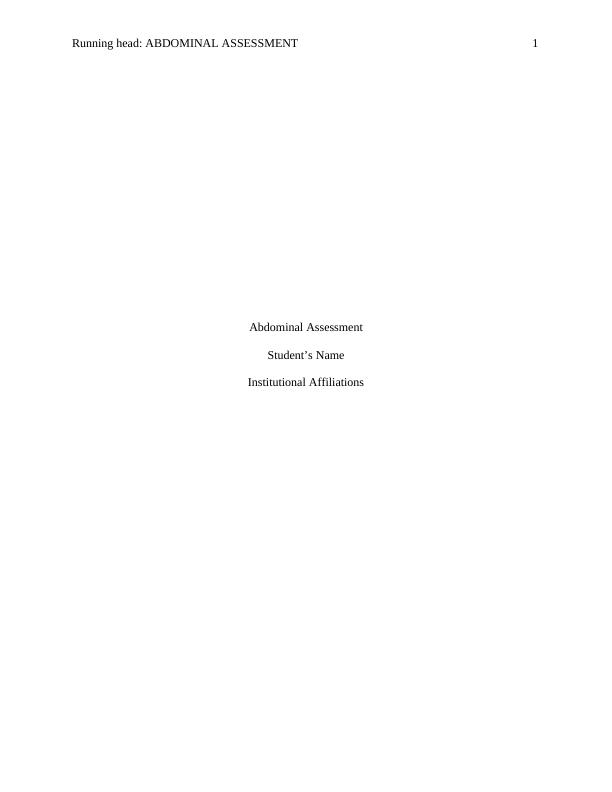Abdominal Assessment - Desklib
Outline the continuum of peri-operative care for elective and non-elective
5 Pages1195 Words337 Views
Added on 2023-06-04
About This Document
Abdominal assessment is a critical component of a systematic diagnostic evaluation. The assessment involves inspection, auscultation, percussion, and palpation. This process is quite distinct from the other body systems’ examination processes which require inspection, percussion, palpation, and auscultation. Learn more about the importance of abdominal assessment and the process involved.
Abdominal Assessment - Desklib
Outline the continuum of peri-operative care for elective and non-elective
Added on 2023-06-04
ShareRelated Documents
End of preview
Want to access all the pages? Upload your documents or become a member.
Nursing Case Study Analysis
|6
|1449
|510
Gastrointestinal System (Doc)
|4
|423
|115
Developmental Assessment 2022
|6
|1508
|20
Critical Reflection on Nursing Professional Experience
|6
|1669
|298
Reflective Essay on Physical Assessment Techniques
|7
|1387
|172
Nursing Critical Reflection
|6
|1346
|260


